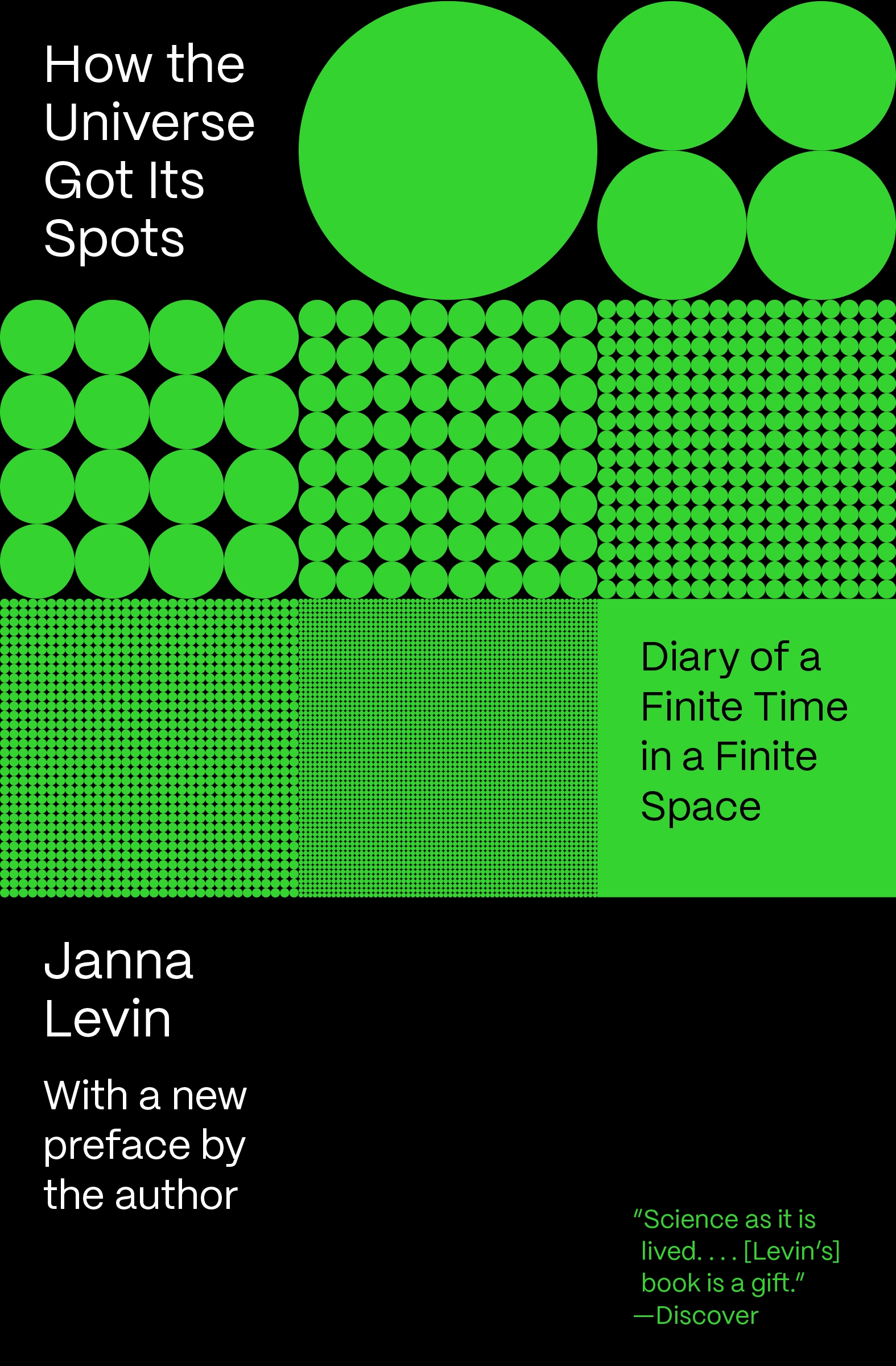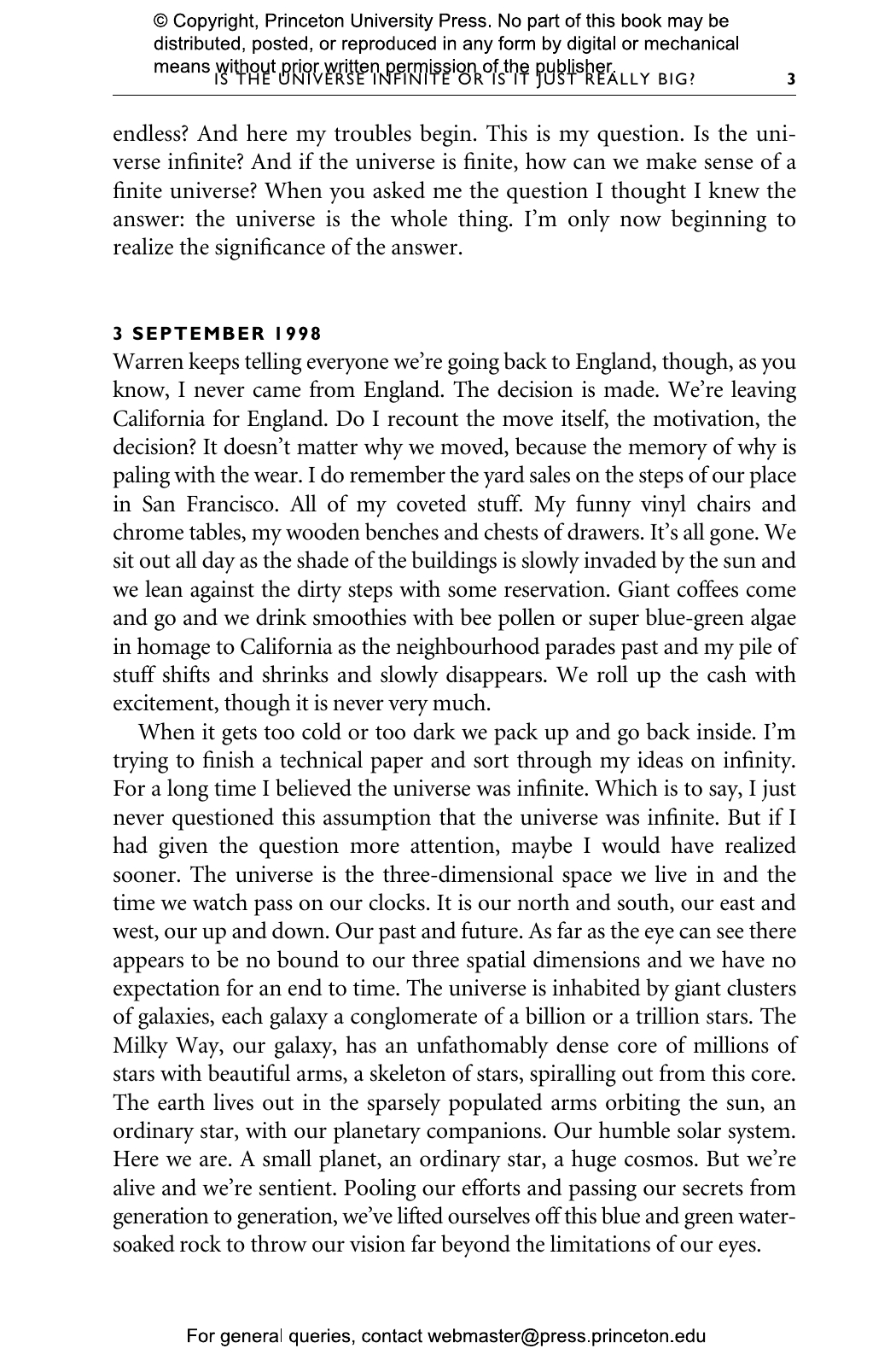Is the universe infinite or just really big? With this question, cosmologist Janna Levin announces the central theme of this book, which established her as one of the most direct, unorthodox, and creative voices in contemporary science. As Levin sets out to determine how big “really big” may be, she offers a rare intimate look at the daily life of an innovative physicist, complete with jet lag and the tensions between personal relationships and the extreme demands of scientific exploration. Nimbly explaining geometry, topology, chaos, and string theory, Levin shows how the pattern of hot and cold spots left over from the big bang may one day reveal the size of the cosmos. The result is a thrilling story of cosmology by one of its leading thinkers.
"[A] lovely, utterly original book. . . . This intimate account of the life and thought of a physicist is one of the nicest scientific books I have ever read—personal and honest, clear and informative, entertaining and difficult to put down."—Alejandro Gangui, American Scientist
"Gorgeously written."—Mary Carmichael, Newsweek
"Highly original. . . . Few scientists are capable of putting their understanding and experiences into words as effectively."—Peter Coles, Nature
"Science as it is lived. . . . [Levin's] book is a gift."—Corey S. Powell, Discover
"Gives a personal resonance to scientists’ attempts to understand the mysteries of the universe."—Washington Post
"Levin not only tours the wilder reaches of cosmology, but she also bares her soul."—New Scientist
"If the universe is infinite, then its possibilities are infinite as well. But in How the Universe Got Its Spots, the astrophysicist Janna Levin insists that infinity works as a hypothetical concept only, and that it is not found in nature."—Lauren Porcaro, New Yorker
"Levin unpacks the technicalities with a skill honed from giving many lectures on the subject, and it is fascinating to read. . . . A book to be applauded."—Andrew Crumey, The Scotsman
"[A] touchingly personal account."—Jim McClean, The Herald (Glasgow)
"Levin interweaves enlightening insights into the most profound enigmas of space, time and infinity with reflections on her struggle to balance her personal and professional lives. The result suggests a blend of Zen and the Art of Motorcycle Maintenance and The History of Time."—Dan Kincaid, Arizona Republic
"The intellectual-emotional balance, and the finely tuned prose, are what makes this different from the very many other books on cosmology. And Levin has found an interesting way to do this; the book is in the form of letters to her mother."—Globe and Mail
"How the Universe Got Its Spots is a genuine attempt to break down barriers, both intellectual and emotional, between scientists and their wished-for audience."—Ken Grimes and Alison Boyle, Astronomy
"Although we're tantalizingly close to the answer, we still don't know if our universe is infinite or finite. Janna Levin, one of the bright young stars on the interface between topology (the study of shapes) and cosmology, describes her efforts to look for the signatures of a finite universe and offers the reader a unique insight into her life and inner thoughts."—David Spergel, Princeton University
"Janna Levin is one of the most talented and original of the young cosmologists, and her book combines a tour of the frontiers of cosmology with an intimate account of her struggles to reconcile the demands of a scientific career with the demands of the heart. No other scientist has yet had the courage to write such an honest and personal account of what it is like to live the life of a scientist."—Lee Smolin, author of The Life of the Cosmos and Three Roads to Quantum Gravity
"This is a totally charming piece of work. A memoir of one very talented young woman, it layers her personal odyssey and bits of science like an exotic piece of intellectual/personal pastry. The attitude toward the subject is that of the artist: feelings matter, pictures matter, intuitions matter. Levin's book is a wonderful read that introduces current science from an odd angle in a lively, accessible, and engaging fashion. I have never read a book like it."—Jeremiah P. Ostriker, Cambridge University














